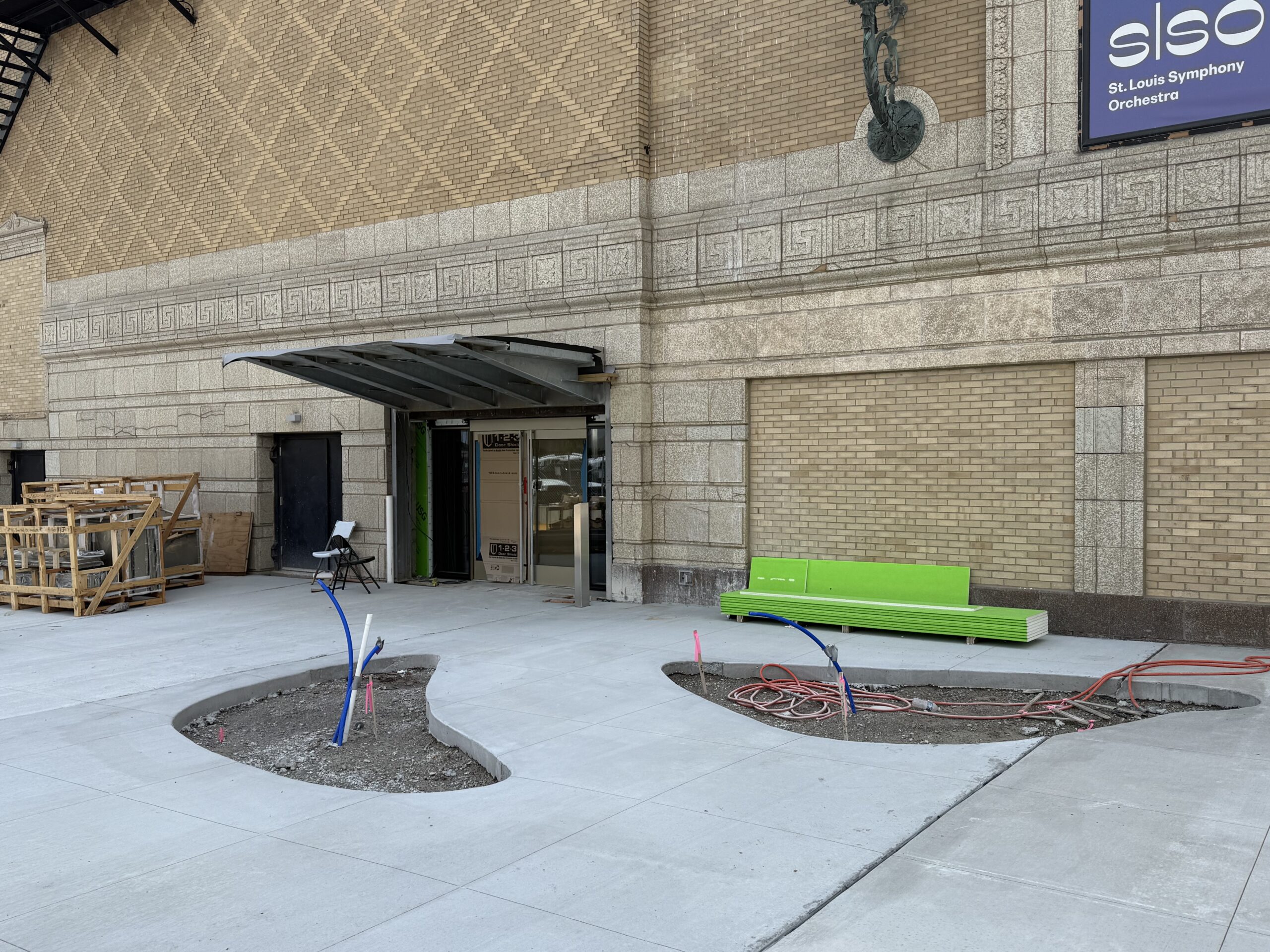May 2025
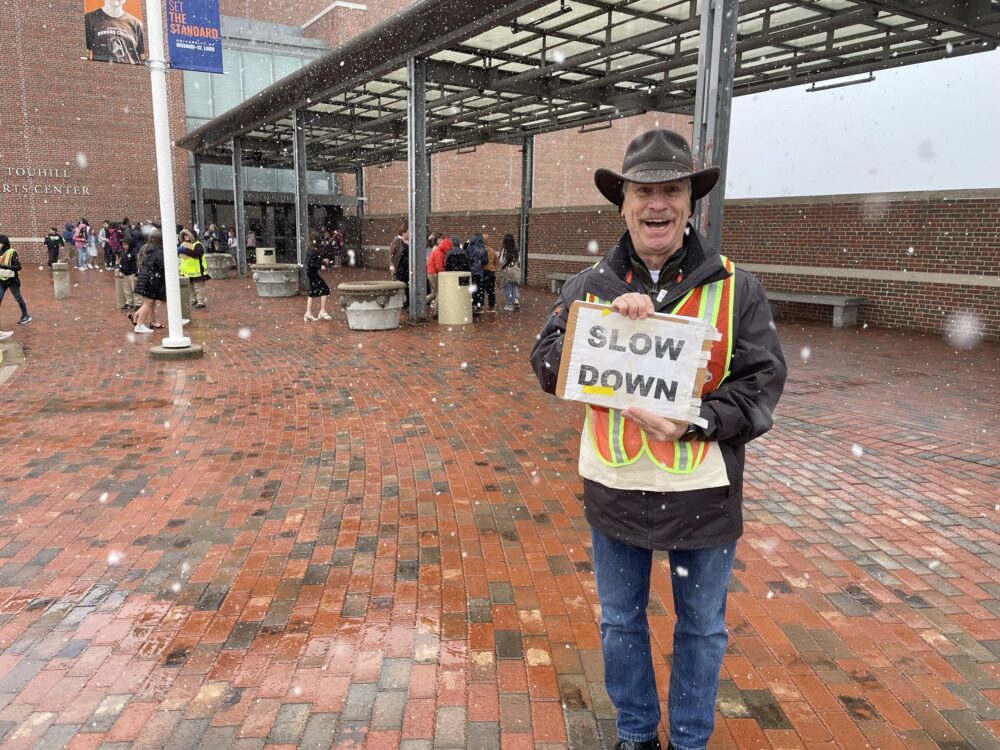
The SVA’s “News and Notes” newsletter is a quarterly publication that reviews the previous quarter’s accomplishments and provides a preview of activities to come. Comments and suggestions are welcome at SVACommunications@slso.org.
Notes from the President
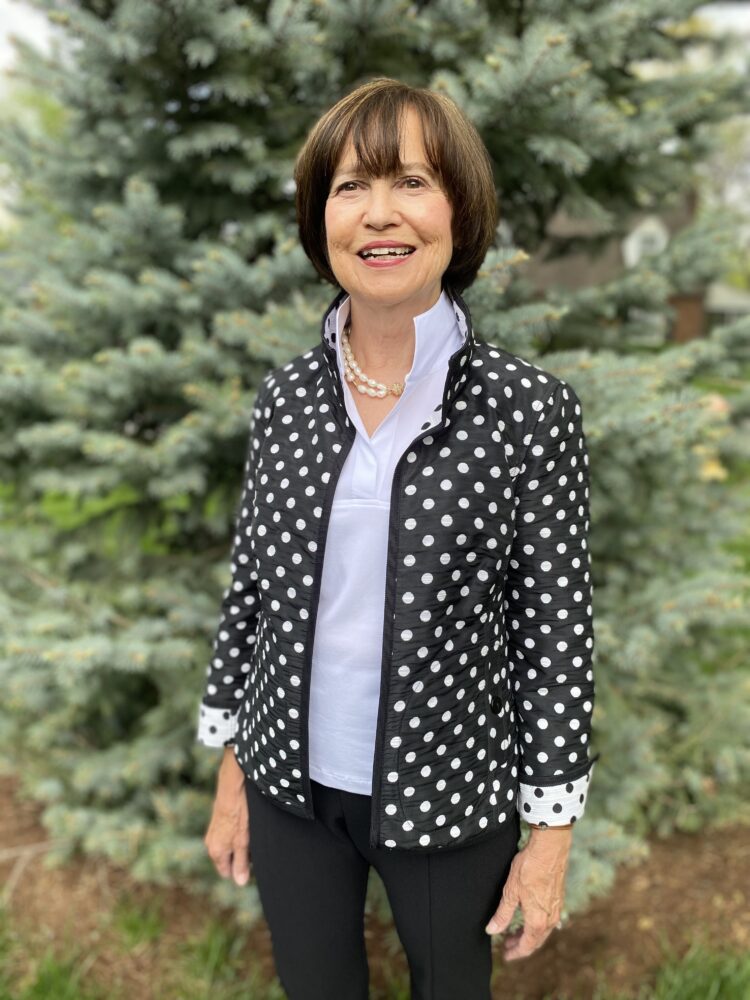
Dear SVA Members,
What a whirl of activity the SLSO and SVA have experienced during the past two years! It has been exciting, energizing, challenging, busy, and very gratifying. We are close to returning to Powell Hall and my projection is we will continue to use these same adjectives and add new ones like happy, surprised, grateful, joyful, delighted, etc.
Together, we have accomplished many things for which we can be proud, and we are laying the groundwork for a bright future for the SLSO and SVA. What is most impressive is how so many people joined together and stepped up during this two-year transition. Thank You!
Some of our notable accomplishments include:
- SVA members graciously responded to the SLSO’s requests to fill new volunteer needs, including selling raffle tickets, greeting audience members at the valet drop off, and serving as shuttle bus ambassadors. Our members accepted the challenge of trying new jobs in new venues that sometimes took them out of their comfort zone.
- We added 50 new members from September 2023 to April 2025. The SVA is focused on growing our membership and is working with the SLSO to promote volunteering.
- Over 90 members have donated $557,000+ for the expansion and renovation of the Jack C. Taylor Music Center. This represents over 60% of our active members, which is a remarkable testament to the love our members have for the SLSO and its mission.
- An SVA team has been and continues to provide feedback on the re-imagining of Express the Music. The pilot program will launch in the fall.
- We hosted our 4th Trivia Night to support the Youth Orchestra.
- To keep our members connected while we were attending concerts at Stifel and Touhill, we continued the popular Cocktails & Conversation, the Ice Cream Social, and added a fun new evening event at Aloha Mini Golf.
- We added a Hospitality Team to share our gratitude and support for the musicians, choruses, and staff by offering gifts of home-baked cookies and treats.
- During the summer of 2024, we wrote job descriptions for 27 SVA committees and teams to better support our growing organization and to ensure we are choosing leaders that have the skills needed to successfully lead us in the future.
- We are continually fine tuning the SVA committees and teams to meet new and evolving needs of the SLSO and its staff.
- We have expanded the SVA focus on volunteer staffing for the growing number of education concerts, which will continue to grow as we return to Powell Hall.
- We are working with the SLSO to adopt technology which will make scheduling volunteers a more streamlined and efficient process.
Thank you to the Executive Committee, SVA Board, and our members for all you have done to make this transition period productive and successful. It has been a group effort.
As the gavel passes to Suzanne Seibel in June and our new leaders take office, I am very confident in the skills of this new team. They are experienced, well qualified, and committed to leading our return to Powell Hall and to guiding our future.
It has been my privilege and honor to serve the SLSO as part of the SVA. Working with you has been a rewarding adventure. I have learned so much and met so many accomplished and bright volunteers, musicians, and individuals who deliver amazing programs every season.
Please accept my heartfelt appreciation and thanks for your time, experience, and willingness to be “cheerful in all weather”—both figuratively and literally! It is fun to volunteer when you are with people you like and share a common commitment. This is the secret of the SVA’s success.
Thanks for your loyalty to the SLSO, SVA, and to each other. There is no better group of volunteers than ours!
With gratitude,
Debbie Dillon
SVA President
Editor’s note: Scroll to the bottom of this issue to read Nancy Malvin’s “SVA History, Part I – 1925-1950″
Thanks to everyone who contributed to this wonderful effort, including Vi Steinmeyer (who worked with Nancy to come up with the idea), the past presidents whom Vi and Nancy interviewed, and all those who assisted with gathering information.
Notes from our Manager
Hello, SVA volunteers!
As preparations for the move back into Powell Hall are coming fast and furious, I thank you for your patience on this journey into new territory. You have been agile in the past, and I look forward to continuing to work with you to support the SLSO as new needs arise. You have responded with grace to last minute SOS calls when the SLSO cannot complete tasks alone, and I thank you for continuing to do so. This summer, keep your eyes open for notices of SVA training to prepare our volunteers for the new season. I do not have details yet, but we would like to get all our SVA trained before we return to Powell Hall, so you are comfortable when the new season opens.
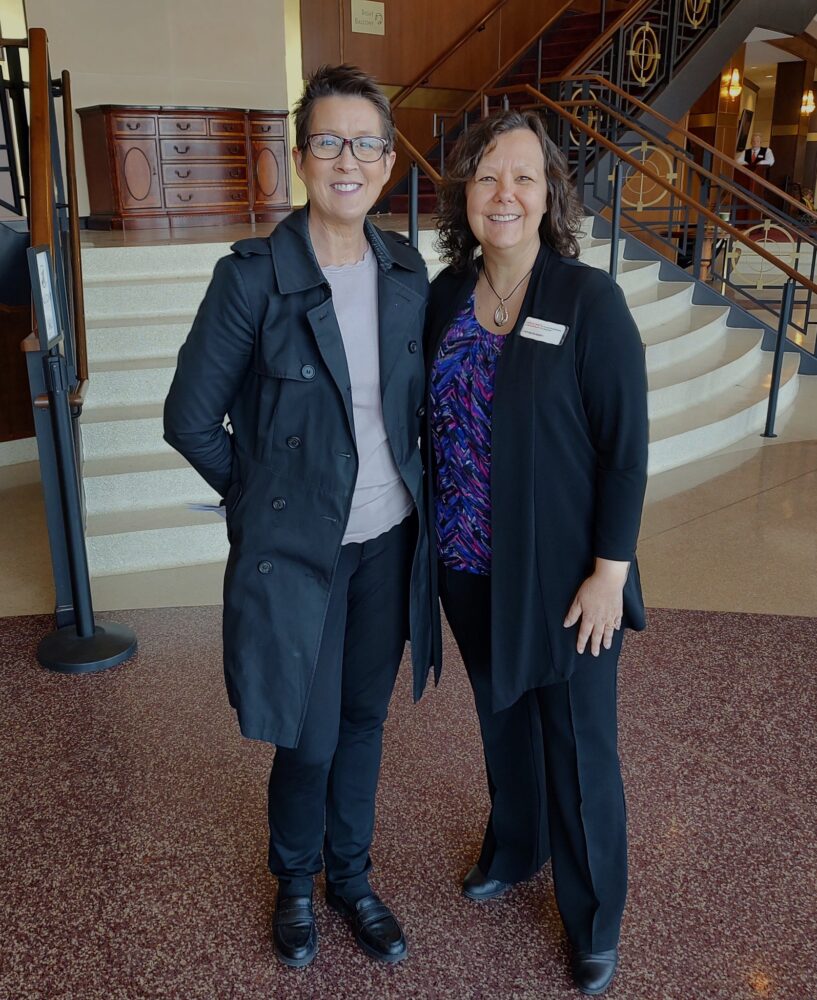
I’d like to give a special shout out to Martha Duchild and Becky Brown for chairing the Trivia Night benefiting the SLSO Youth Orchestra. Thanks to everyone who worked, contributed, sponsored, played, or sent good wishes for this fun and successful event.
I’d also like to give a special thank you to my first SVA executive board. Their professionalism, wisdom, and helpful attitude have made this adjustment easy. They have been gracious with my many questions about the inner workings of the SVA, and responsive in timely matters. I will miss their guidance, but I look forward to spending time with the new team as we begin the preparations for the return to Powell Hall in September.
Thank you SVA for the thousands of volunteer hours and your enthusiasm and commitment to supporting the mission of the SLSO. Thank you for your friendship and for inviting your friends to join the SVA so they, too, can enjoy all the benefits the SVA offers. It’s not work if you are having fun! I look forward to seeing you soon at an SVA event.
Andrea Biske
Manager of Volunteer Programs
Update on SVA Gifts to Powell Hall and the Music for All Campaign
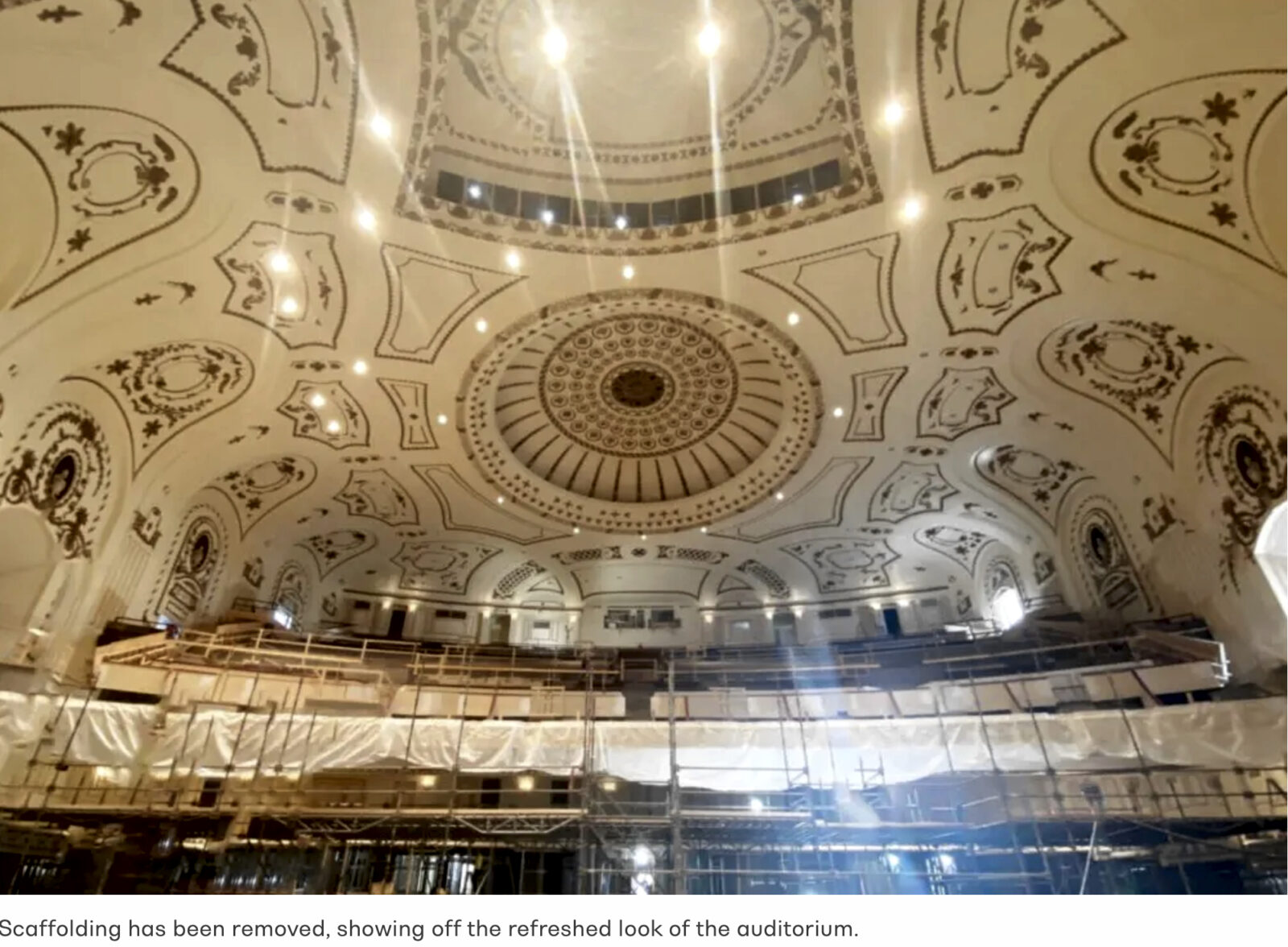
Thank you SVA members for your generous gifts to the Music for All Campaign! As of April, your donations have exceeded $557,000. Over 90 SVA members (60% of our active members) have participated in making this campaign successful.
Your generosity makes it possible for the SVA to contribute multiple gifts to this once-in-a-generation SLSO project, including:
- The tree-lined pedestrian walkway between the handicapped parking spaces and the new East entrance
- The kitchenette in the musicians’ lounge
- A bench named in honor of Darlene Roland, SVA President from 1999 to 2001, who made a significant bequest to the SLSO, SVA, and Music for All Campaign.
If you would like to make a gift to support our beloved SLSO, please visit the SLSO.org website:
SLSO Restructures Front of House Operations
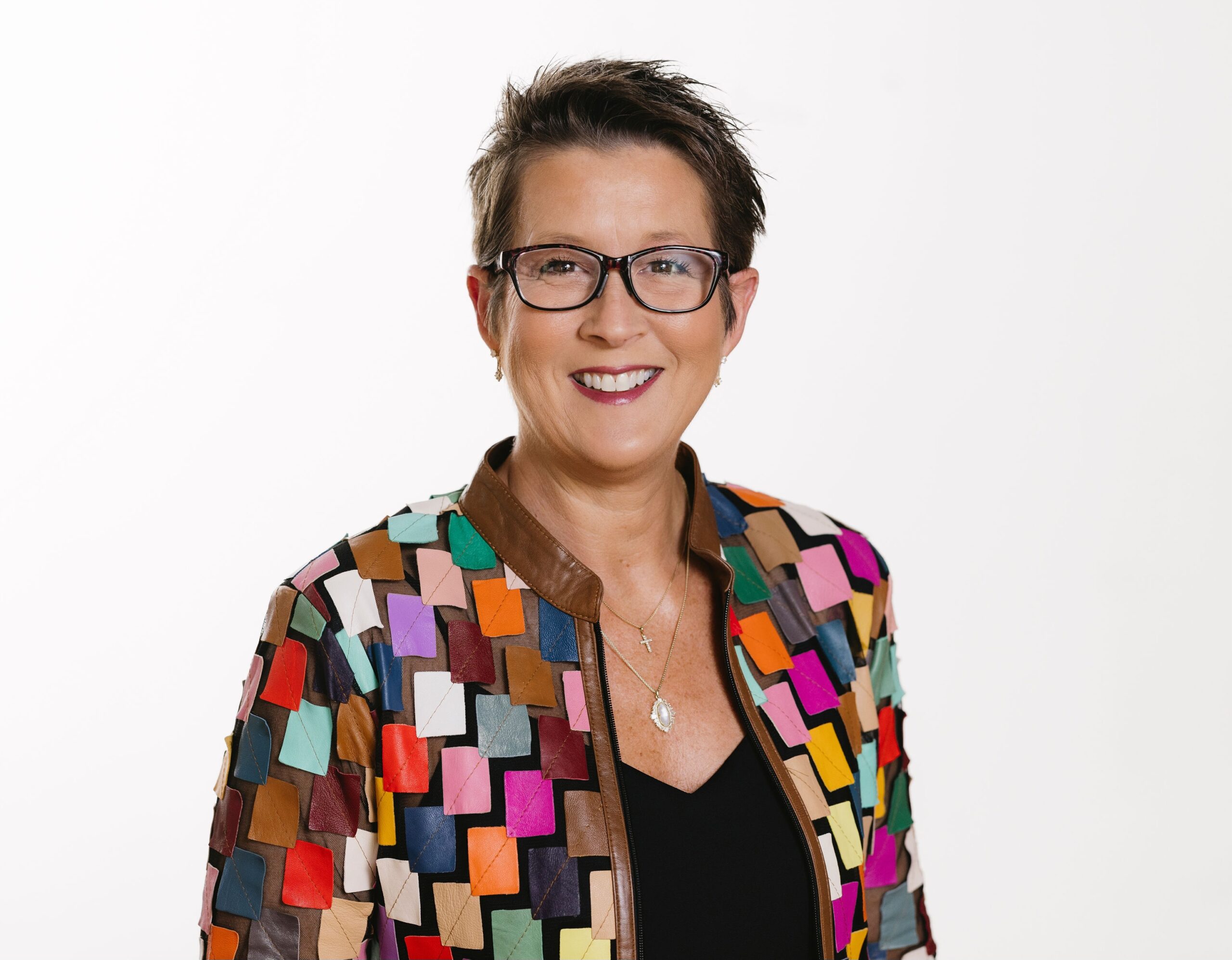
In January, the SLSO announced a restructuring of our Front of House operations to enhance efficiency and alignment within the organization. Front of House operations transitioned from the Marketing and Communications department to the Artistic and Operations department. This move brought both Front of House and Back of House operations under the leadership of Maggie Bailey, streamlining communication and coordination.
With this change, longtime friend of the SVA Kristin Lamprecht assumed the role of Director of Guest Experience. In this capacity, Kristin supervises Emily Scott (see next article), Front of House Operations Manager, Hannah Friedenbach, Events and Rentals Manager, as well as a food and beverage manager role that will be posted soon.
Kristin reports directly to Maggie Bailey and works closely with the Marketing and Communications department to ensure a cohesive and exceptional guest experience that aligns with our brand and vision. Kristin’s extensive experience in philanthropy event production, donor relations, and event and rental management made her ideally suited for this position. During the transition, she also continues her excellent work in closing out the Music for All campaign for the renovation and expansion of Powell Hall.
Feature Article: Get to Know Emily Scott
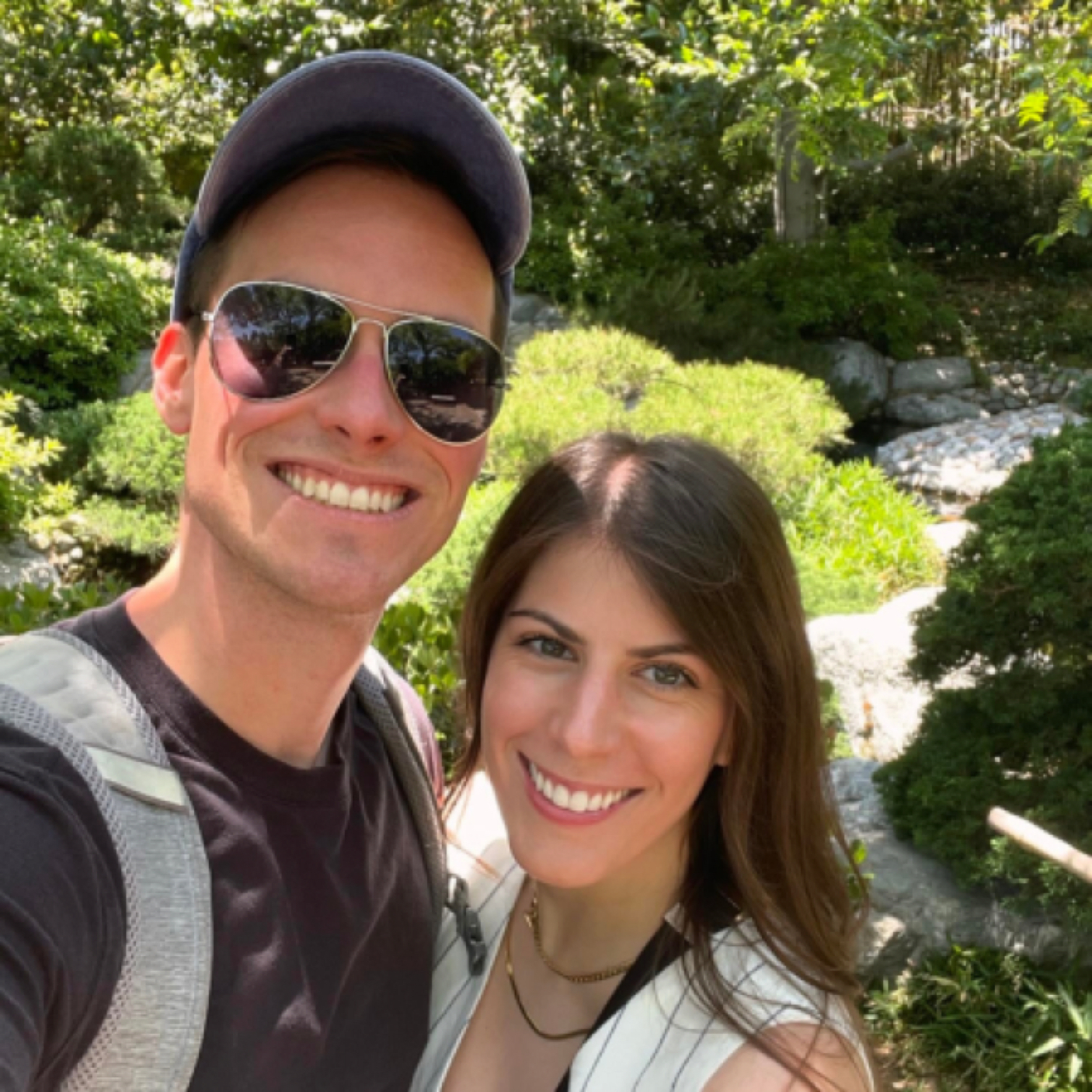
Emily Scott is the SLSO’s new Front of House Operations Manager. We asked her to tell us a bit about her history and the goals she seeks to achieve in her new position.
For years, the SLSO has been my favorite place to slow down and experience something beautiful. I’ve been attending concerts—both classical and special programs—for about a decade, ever since I moved to St. Louis. Music has always been a central part of my life, and being part of the team that brings it to others is deeply meaningful to me.
Though my background is in marketing, my love for live events started with my very first job—working at The Blue Note in Columbia, Missouri, while attending Mizzou. That experience sparked a lifelong appreciation for the energy of performances and the behind-the-scenes work that makes them possible. Since then, I’ve been passionate about creating welcoming, memorable spaces for audiences.
In my role as Guest Services Manager, I hope to carry on the rich tradition and deep history the SLSO has established, while also introducing new audiences to the extraordinary experience of live symphonic music. Powell Hall is home to so many, and I want every visitor—whether it’s their first concert or their hundredth—to feel that sense of belonging and awe.
I’m especially excited to work alongside the SVA. Your contributions to the Guest Services team are truly invaluable. The warm welcome you extend, your attention to detail, and the genuine care you show guests all help shape the SLSO experience. Your dedication doesn’t go unnoticed, and I feel lucky to partner with a group so deeply committed to this organization.
Outside of work, I love reading, going to concerts around the city, and spending time with my husband and our two cats, Pickle and Momo. I’m so grateful to be part of this incredible community and look forward to getting to know each of you.
Upcoming SVA Events
- – Spring Membership Meeting – June 6, 2025
- – Aloha Mini-Golf Summer Social – July 9, 2025
- – Ice Cream Social – August 6, 2025
- – Powell Hall Dry Run – September 6, 2025
- – SLSO Forest Park Concert – September 17, 2025
- – SLSO Powell Hall Reopening Weekend – September 26-28, 2025
- – Powell Hall Community Event – November 8, 2025
Membership:
Cocktails and Conversation
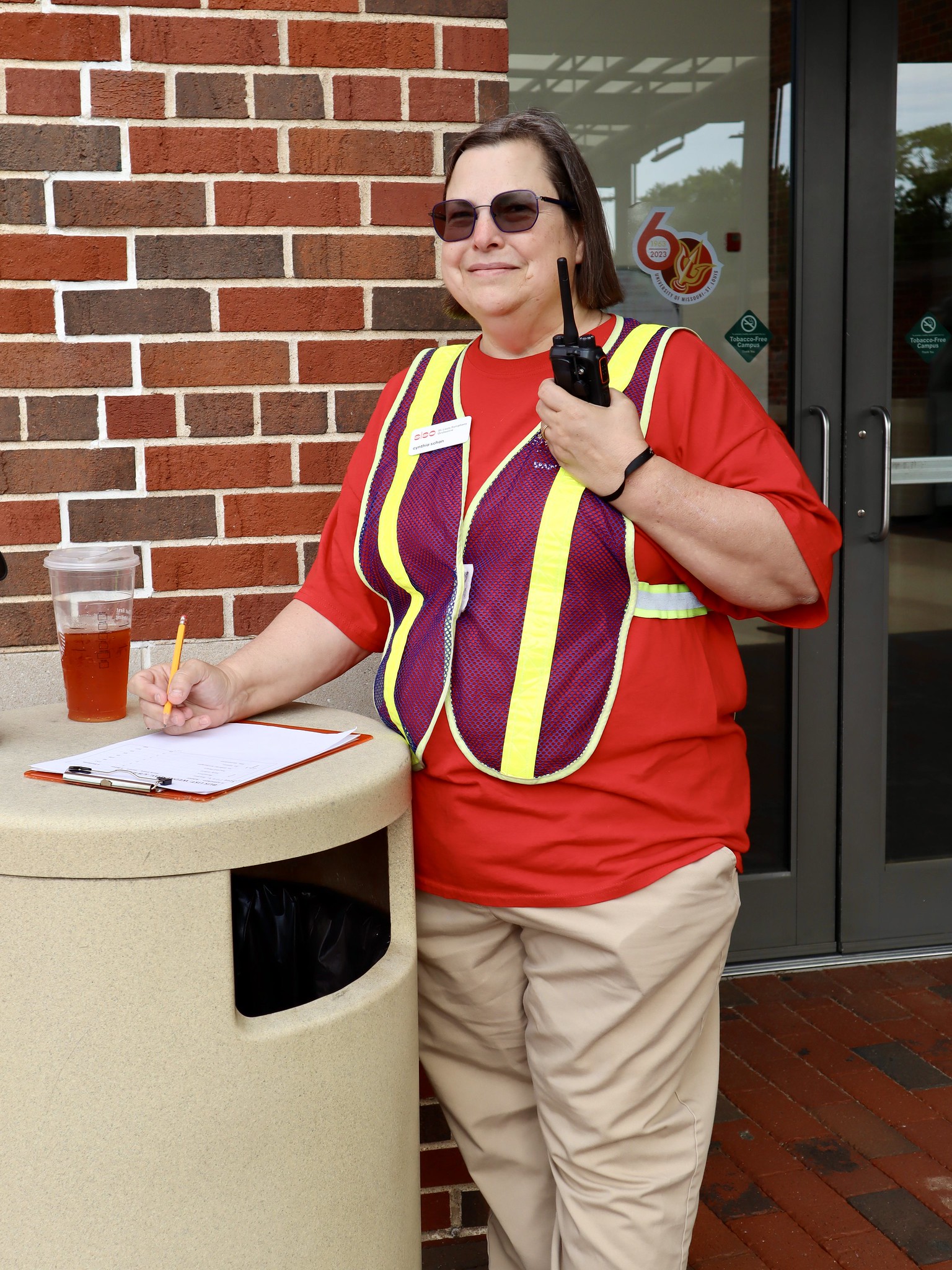
Cocktails and Conversation had another year of stimulating and entertaining conversations with three special guests: Associate Principal Horn Thomas Jöstlein, cellist Bjorn Ranheim, and SLSO Director of Facilities Cynthia Schon. These zoom meetings are typically held from 5:00-6:00pm on Tuesdays, and there is no charge, of course! It’s a great way to stay connected and get to know symphony musicians and staff members.
If you have any suggestions for speakers for the 2025/26 year, please let us know. We hope you enjoyed this year’s “C and C,” and we look forward to seeing you in the fall!
Marilyn Humiston and Phyllis Traub,
Cocktails and Conversation Team Leaders
New and Prospective
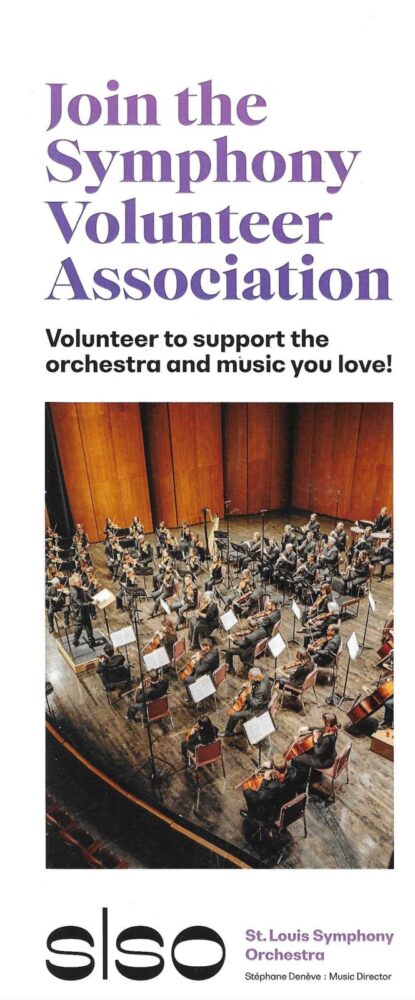
The New and Prospective Committee is very pleased to introduce our newest SVA members:
- – Linda Allen
- – Patricia Ann Murphy
- – Isabel Ackerman
- – Todd Biske
- – Ann Omura
- – Marilyn Marcus
- – Susan Meister
- – Anthony Hill
- – Barbara Gervaise
Most of these new members were referred to us by current SVA members—a good reminder that YOU are one of our strongest recruitment (and retention) tools! Remember to share positive experiences with friends, family, colleagues, and neighbors. You never know who might be looking for a new way to give back or an opportunity to connect with fellow music lovers.
As always, if you have any ideas on how to recruit new SVA members, please contact us at SVANewandProspective@slso.org. We would love to hear from you!
Elizabeth Hahn, Chair
Connie Wepfer, Vice-Chair
Meetings and Events
Mark your calendars as you read this note for the Spring Membership Meeting Luncheon at the Saint Louis Woman’s Club on June 6, 2025, beginning with the 11:00am meet and greet. This is an important meeting as we will vote for new executive committee members as well as half of the committee chairs. Additionally, you will have an opportunity to refresh your personal choices for volunteer opportunities as the annual survey form will be available that day.
SVA’s Winter Brunch, March 15, 2025, was held at Greenbriar Hills Country Club in Kirkwood, MO. Sixty-eight SVA members, along with six SLSO staff plus guests started the morning with a meet and greet, followed by a full breakfast-style buffet brunch. Meetings and Events members Terri Ciccolella, Penny Bari, Meg and Don Reichman, Teri Steinberg, Linda Seibert, Amee Colvin and Kathy Norwood adorned each table with fresh floral displays, registered incoming attendees, and greeted everyone. President Debbie Dillon opened the meeting with greetings to all and expressed appreciation for those who organized the brunch. Andrea Biske followed with her own expression of appreciation for all SVA does and introduced the staff in attendance.
Alex Shapiro, Chief Philanthropy Officer, shared his personal story including family photos that highlighted his progression through early years. He included past employment that influenced his way to his job here with the SLSO, having most recently been with the Kansas City Symphony. His update of Powell Hall included parking issues and plans for continuing shuttle service.
As SVA attendees always eagerly await, there was outstanding music performed by violinist Ann Fink and bass clarinetist Tzuying Huang. Ms. Fink most recently performed as a violin fellow with New World Symphony in Miami Beach. She holds bachelors and master’s degrees in music from the Juilliard School and also studied at the Jacobs School of Music at Indiana University. She is a certified Suzuki Violin teacher, bringing the love of violin study to St. Louis students. Ms. Huang held the Clarinet/Bass Clarinet position with the Kansas City Orchestra and Dallas Symphony Orchestra prior to arriving at the SLSO in 2015. She has performed as guest bass clarinetist with the Cleveland Orchestra, Chicago Symphony Orchestra, and Dallas Symphony Orchestra. She is the founder and artistic director of the Ariel Concert Series that stages monthly concerts, which Ann Fink coordinates. The two musicians performed Three Duets by Mozart which originally were from a collection of 12 duets for violin and viola. Their final piece was the duet movement from a clarinet trio by Darius Milhaud, who lived in St. Louis and taught at Washington University at one time. What a wonderful gift, to have the opportunity as SVA members to hear the excellent musicians of the SLSO and have an opportunity to learn about them in person.
Debbie Dillon thanked SVA members for the remarkable contributions to the campaign and announced a bequest donation of $100,000 from former SVA President, Darlene Roland.
Kathy Norwood, Chair
Membership Engagement
Kathryn Snodgrass continues to receive requests and sends cards in sympathy or with well wishes. Anyone in the SVA membership is encouraged to contact Kathryn at SVAEngagement@slso.org, requesting written recognition of a fellow volunteer’s needs or celebrations.
Kathryn Snodgrass, Team Lead
Philanthropy & Stewardship:
Advocacy
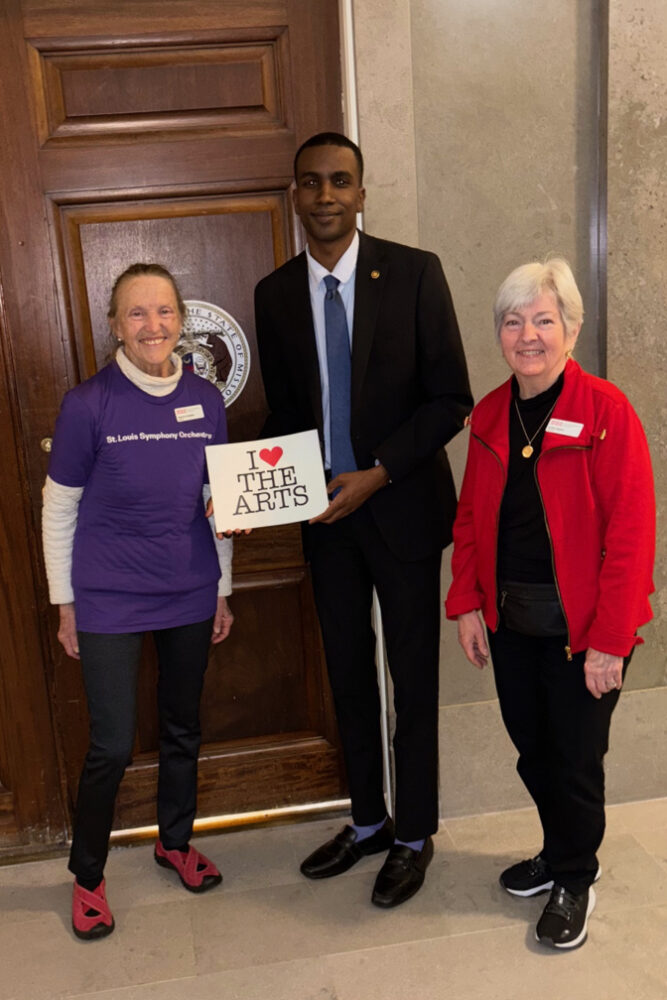
This has been a busy period for the SVA Advocacy Committee. Committee representatives traveled to Jefferson City on February 5. This was the big day to meet with our elected representatives to advocate on behalf of the arts in Missouri and the SLSO. We were well prepared to point out the impact of the SLSO on each of the representatives’ districts. We continue to follow up with and thank our representatives. More recently, we’ve reiterated the urgency of these requests in light of the recent cutbacks to federal agencies supporting the arts.
Paul Kravitz, Chair
SVAAdvocacy@slso.org
Ambassadors
The Ambassador Committee’s last shuttle and valet hosts for the 2024/25 classical concert series were on May 4. We are very appreciative of the number of dedicated and enthusiastic volunteers who have greeted our shuttle riders, patrons, and donors this past season. We have also welcomed several new volunteers this past year.
The Coffee Concerts and Evening performances seemed to have the highest number of shuttle riders, with many being either season-ticket holders or those who had ridden the shuttle before. Many first-time riders also expressed their appreciation for the shuttles and said they would ride them again. It was frequently asked if the shuttles would be continued when the new season resumes at The Jack C. Taylor Music Center. While no final commitment has been made at this time, we understand that shuttles would be provided to many, but perhaps not to all scheduled classical concerts, as has been done these past two years.
The shuttles provide a time for the SVA Ambassador host to speak to a small and interested audience. Topics can vary from current or upcoming concerts to the opening night raffle, season tickets, and SVA enrollment. Most importantly, this is the time for the Ambassadors to greet and thank each person for coming and supporting our SLSO!
Sharongay Pearline, Chair
Donald Pearline, Vice-Chair
Boutique
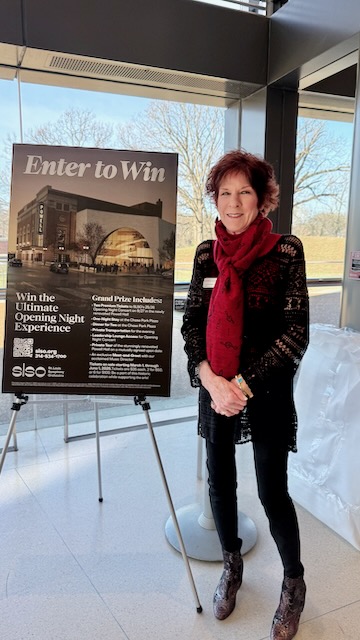
The Boutique Committee has been on hiatus since the remodeling of Powell Hall began in fall of 2023. Since March 1, we have transitioned to the Raffle Committee. The raffle is a fundraiser for the SLSO which was conceived by the Philanthropy department. To enter the raffle, concertgoers purchase a ticket to win the grand prize, which includes opening night concert tickets on September 27, 2025, dinner and a one-night stay at the Chase Park Plaza Hotel, and transportation for the evening. The winner will also have a private tour of the new Powell Hall and an exclusive meet-and-greet with Stéphane Denève.
The Raffle Committee has enlisted two volunteers to attend each concert at Touhill and Stifel. Volunteers explain the process of buying a chance to win the grand prize and give patrons a business card that includes the information on how to enter to win. Concertgoers can also scan the QR code to enter the raffle on the spot. The procedure is quite easy and offers the volunteer the opportunity to engage with patrons in conversations about the SLSO and thank them for coming to the concert. Volunteers are not asked to handle money.
The volunteer receives a complimentary ticket for the performance.
We have received many positive responses from volunteers who have served as raffle representatives. We have been working closely with the Philanthropy department, and they have expressed their delight with the responses so far.
For more information about the raffle, click here: Powell Hall Opening Night Enter-to-Win – St. Louis Symphony Orchestra
Christine Henry, Chair
Karen Silsby, Vice Chair
Education and Community Programs
Trivia Night
A big THANK YOU goes out to those of you who contributed in some way to our March 29 “Science of the Symphony” trivia night! Whether it was volunteering at the event, helping to secure round sponsorships, purchasing a table or tickets, or donating items for our silent auction and raffles, you made our event a success. Thanks to your commitment of time, talent, and treasure, we were able to generate more than $14,000 for the St. Louis Symphony Youth Orchestra! Once again, camaraderie, fun, and a little competition marked the evening, with first prize going to the SLSO’s Lesley Chaney. We cannot thank Lesley enough for donating 100% of her prize money back to the fundraiser!
Our hosts Mixtape Trivia once again delivered an energetic program, with ten rounds of ten questions each, spanning categories like “Motown in Their DNA” to “Science Fiction Addiction” to “Anatomy of a Song.” As has happened in prior years, guests ended up singing along to some of the clues, creating an atmosphere of joy. Our hosts were happy to receive plenty of compliments for their performance once the evening came to a close. It’s gratifying to know that we have support not only from within the SLSO family, but also from the community at large, who get to experience a small taste of what the power of music can do to uplift the spirit.
Coffee Concerts
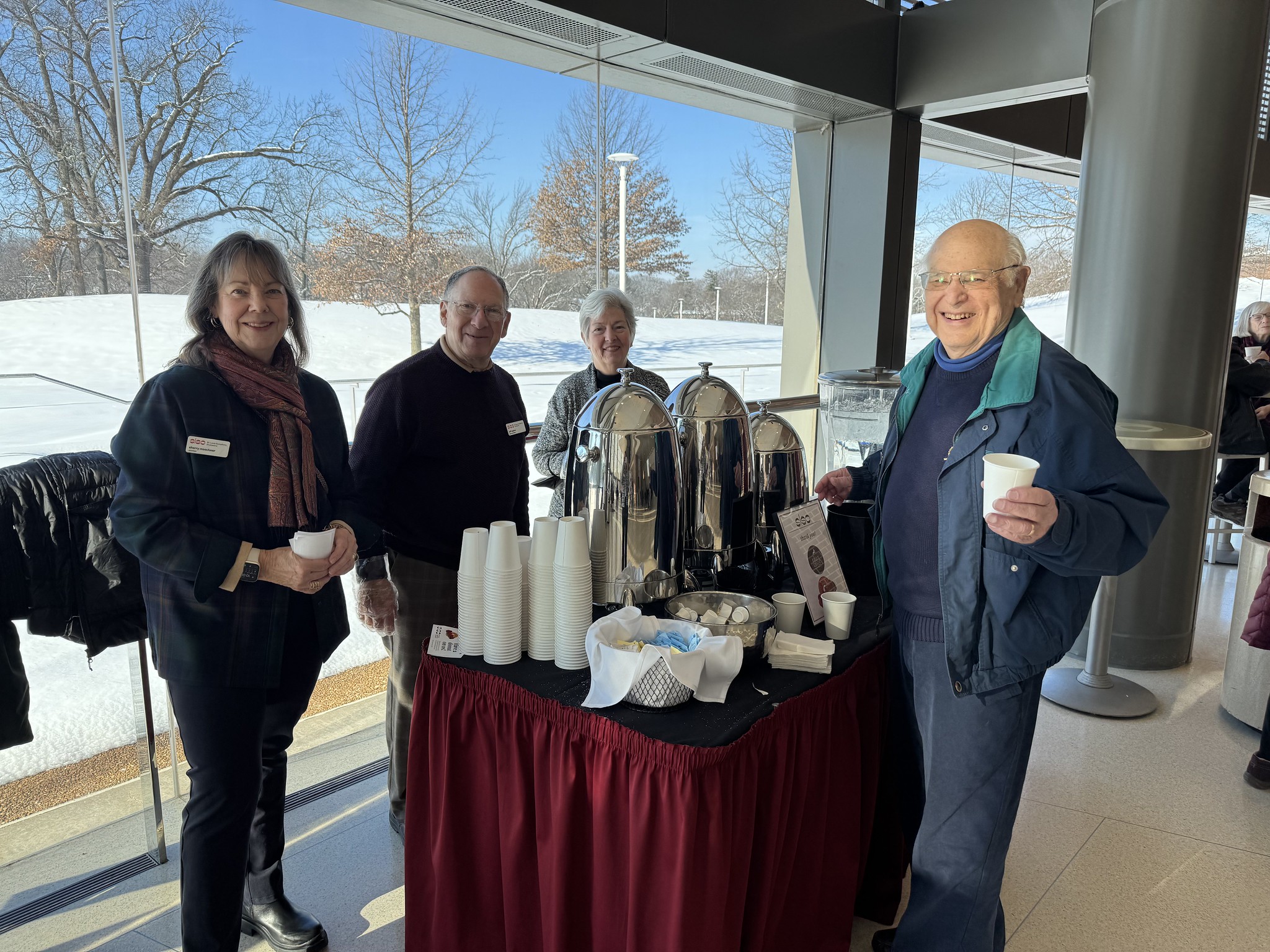
The final Coffee Concert of this season was held on Friday, April 11 at the Touhill. It was business as usual laced with a tinge of excitement knowing the opening concert at Powell Hall in September will be a Coffee Concert. If you have an interest in becoming a Coffee Concert host, be sure to note this on the survey to be released at the Ice Cream Social in August.
Dave Propper, Team Lead
Team email: SVACoffeeConcerts@slso.org
Picture the Music
During the 2024/25 school year, more than 13,000 students from 70 schools listened to Conga del Fuego by Arturo Márquez and created paintings and drawings that expressed their own creative thought and emotions inspired by the music. The top 100 finalists were selected from over 400 pieces of art that were submitted.
The PTM awards ceremony was held at the Missouri Botanical Garden on Saturday, April 12. After being on display at MOBOT, the artwork was displayed at the Saint Louis Art Museum from April 14-27 and at The Magic House from April 29-May 11. To view the artwork online, click here.
Mike Darcy, Chair
Sue Darcy, Vice-Chair
Express the Music
The reimagined form of Express the Music is just about ready to take flight with the 2025/26 season. A pilot group of eight schools will participate using the newly created format for entries. The SLSO Education department has designed new and enticing ways for young people to express their thoughts and feelings having listened to a piece of selected music. The hope is for a broader audience of students to participate, tapping into creative juices that they didn’t even know they possessed.

Instrument Playground and Tiny Tunes
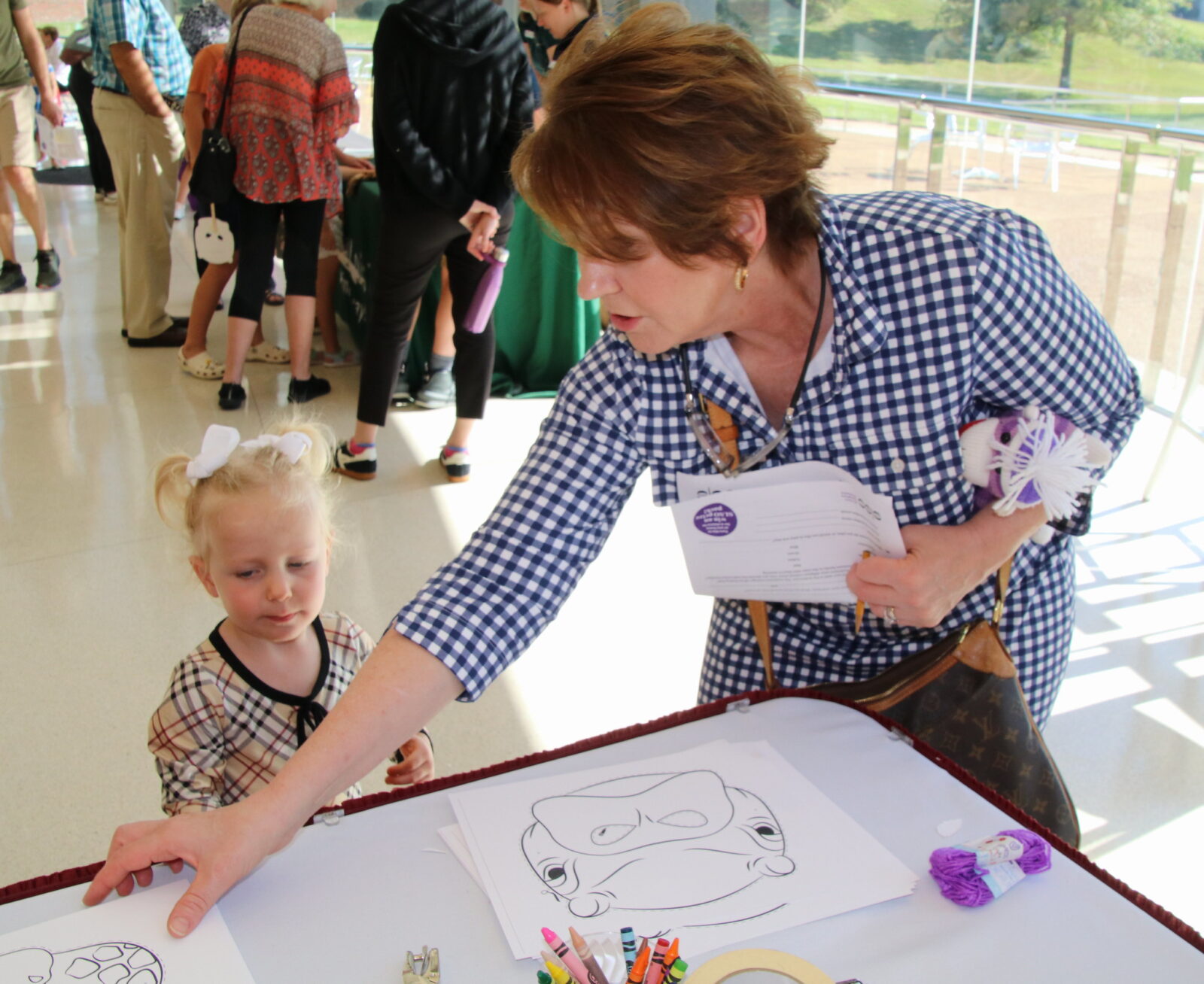
Although on a hiatus of sorts, the committee is starting to return to action. At the most recent Concert for Kids, a contingent of IP volunteers provided much-needed assistance and supervision for the pleasingly large turn-out.
Harry Moppins, Chair
Christine Henry, Vice-Chair
Youth Orchestra
The final Youth Orchestra concert for this season was held on May 11 at 3:00pm at the Touhill Performing Arts Center. The St. Louis Symphony Youth Orchestra concluded its season with a program of passion and contrast, from the brassy punches of Unsuk Chin to the elegance of Henri Vieuxtemps, featuring YO violinist Aiden Moon, to Prokofiev’s dramatic retelling of Romeo and Juliet.
Education Hosts
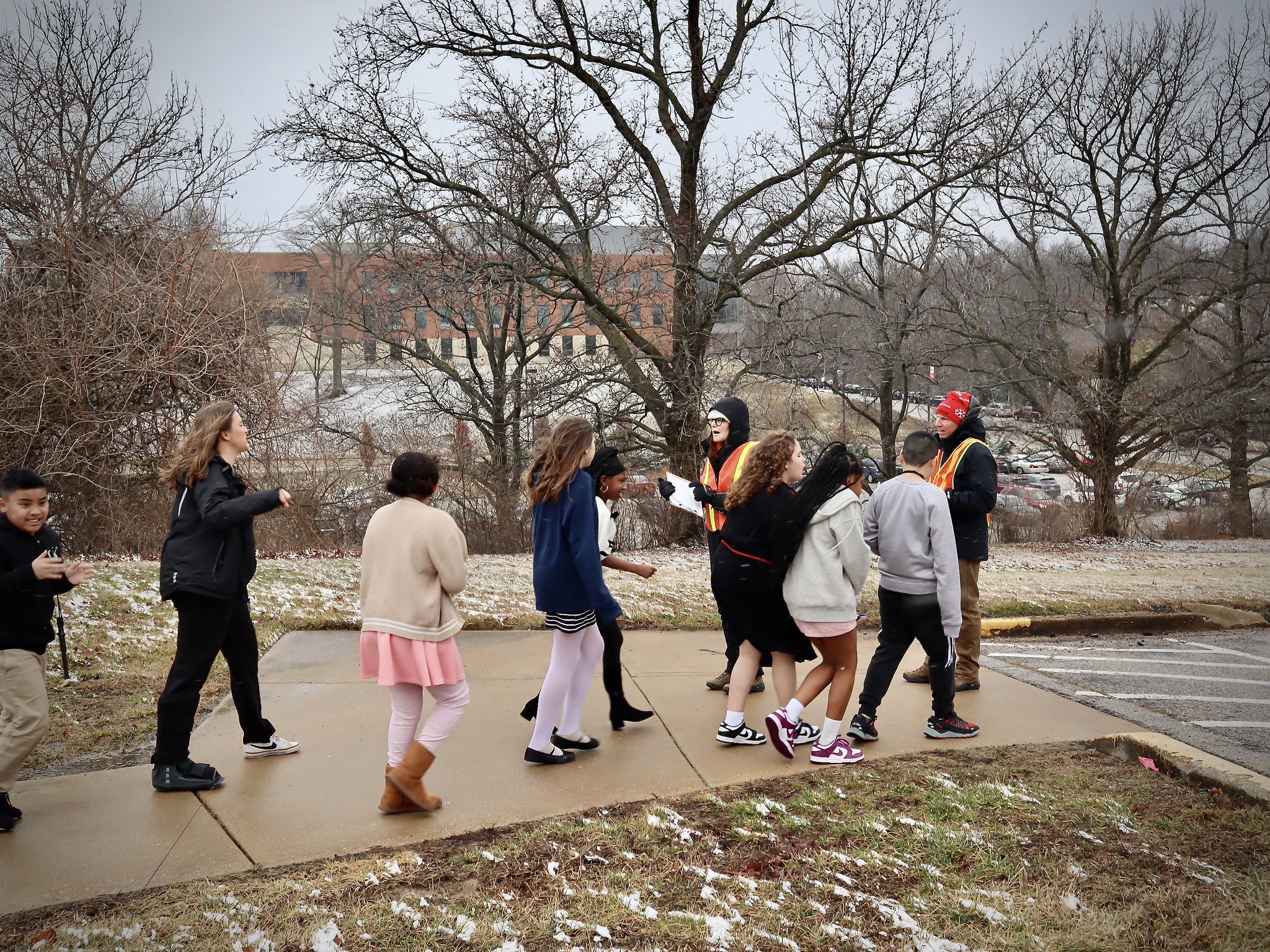
To say that the Education Hosts had a busy few weeks this spring would be a classic case of understatement. Beginning the first week of March and stretching into the first days of April, more than 40 SVA volunteers assisted with 13 concerts over 7 dates at two venues. Whether confronted with the icy winds of March or the sunny warming days (and/or tornado-threat days) of April, all activities at the Sheldon and the Touhill proceeded smoothly as the younger children hopped, skipped, jumped, and shook (maracas eggs) their way through the Family and Tiny Tunes concerts. A huge thank you to all our Education Hosts for helping the Education department connect with our region’s youth—and we’ll see you in the fall.
For information about Education Hosts, please contact Team Lead Steve Seele (SVAEduAmbassadors@slso.org).
Thank You From Sarah Ruddy
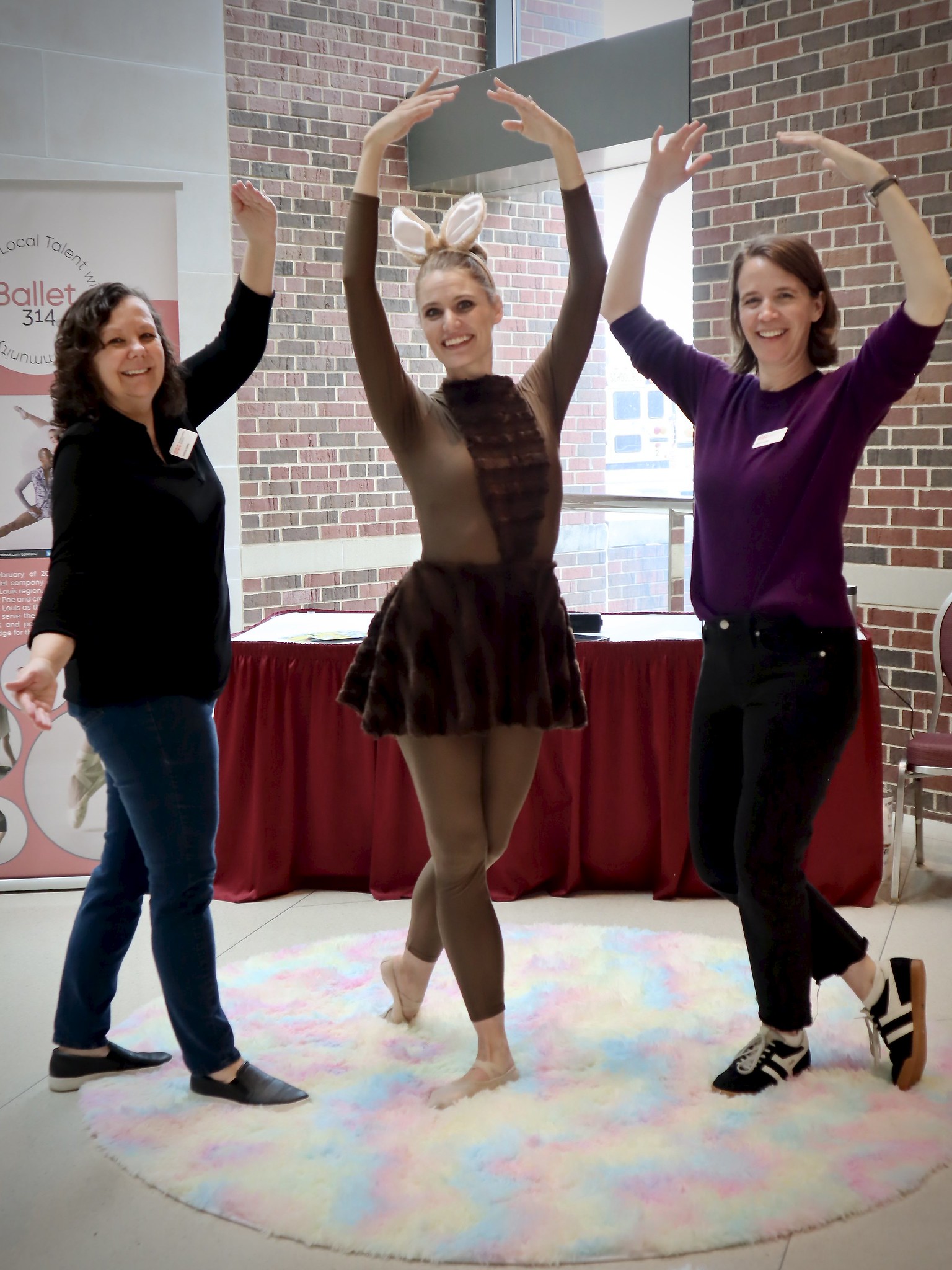
Dear SVA Friends,
Wow, what a whirlwind few weeks it has been! Thank you for volunteering your time and giving your energy to make the Because and Tortoise and the Hare concerts fun, engaging, and problem-free! We could not have done that without your help.
Thanks to you, we had a full house of happy concertgoers at Because on March 23. After you helped them to dance, write their stories, play boomwhackers, and learn about instruments in the pre-concert activities, they were all primed to be inspired by the concert.
On March 29, we provided a fun pre-concert experience for approximately 1,500 people at the Sheldon when we presented Tortoise and the Hare to our family audience. You all brought the fun when you helped the kids play instruments, conduct, explore an obstacle course, and more.
And to top it all off, you came back for more at the Touhill, where we hosted almost 2,000 people across six concerts. Thank you for getting kids safely off and back on their buses, for guiding them through their pre-concert path, and for joyfully engaging with them at each activity station.
We are truly grateful for your support of SLSO Education Programs.
Amidst all the activity at these concerts, we can’t always see everything that happens. We’d love to hear about your experience and any feedback you might have. Your input helps us improve the concert experience for kids and improve the volunteer experience at future events. So, if you have a moment, please complete our volunteer survey.
Thank you again for everything you do for us. We hope to see you again soon!
Sarah Ruddy (she/her)
St. Louis Symphony Orchestra
Education Programs Manager
314-286-4488
SVA Losses in Recent Months
Paula Hertel
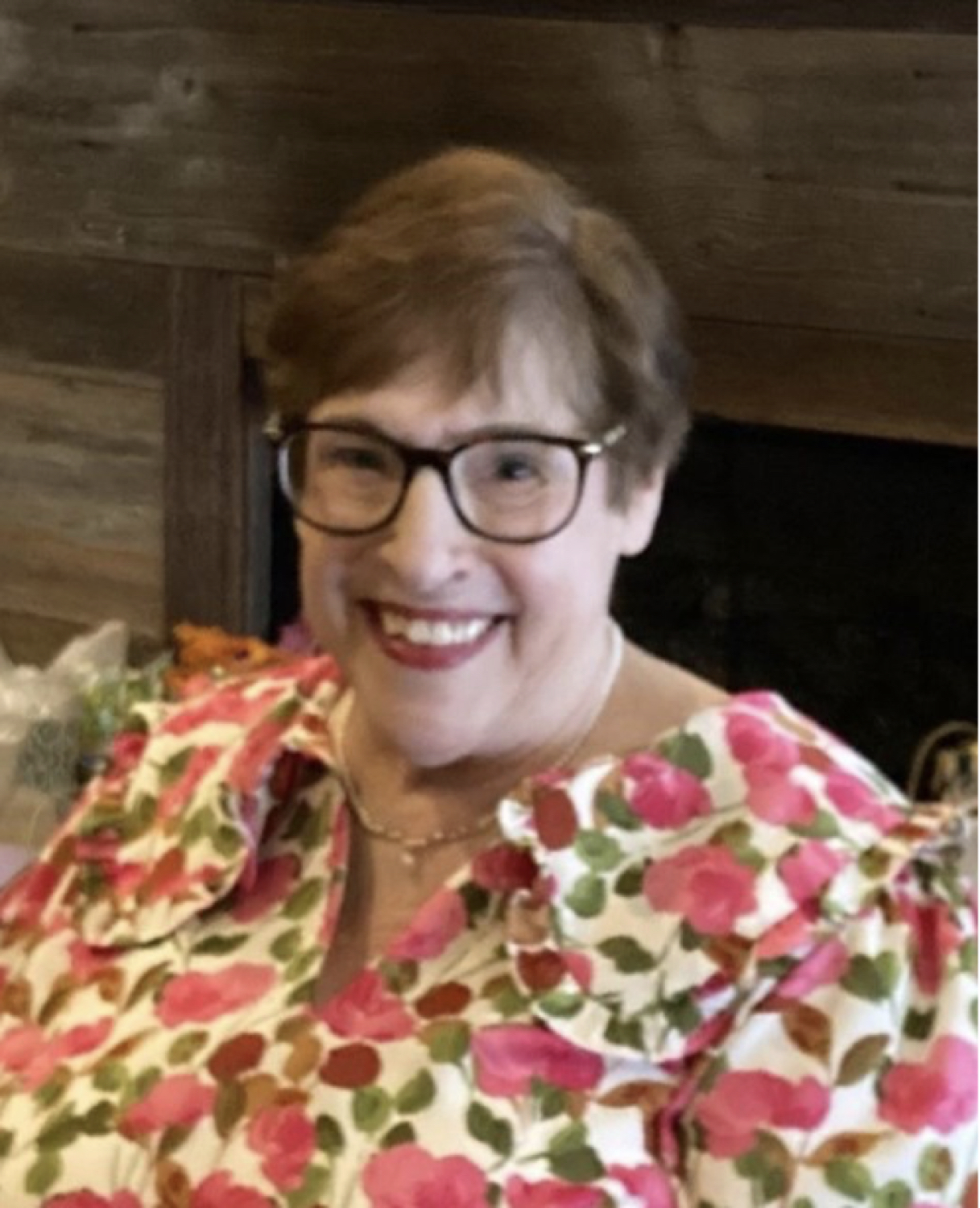
Paula Fay (Nebolsky) Hertel passed away peacefully on February 1 at the age of 82 after a short battle with cancer. Paula was the beloved wife of Norman Hertel for nearly 58 years; devoted mother of Elana Jean Hertel; and a cherished aunt, cousin, teacher, and dear friend to many.
Paula grew up in Cincinnati, Ohio, and was the namesake for her father’s shoe store, Paula Lee Shoes. Her lifelong love of theatre and music began at Woodward High School, where she participated in Choir and Drama Club and was a member of Omega Sigma Phi Sorority.
Paula graduated from the University of Cincinnati in 1964 with an undergraduate degree in Education. She began her teaching career in Ohio while attending a summer program to earn her Master’s degree at Indiana University. In the summer of 1966, she met Norman on a Friday, dated him over the weekend, and became engaged the following Monday. It was love at first sight.
Paula enjoyed an accomplished career of 50 years in education, spanning all elementary grades, devoted to the teaching and learning process for both educators and students. Her longest tenure was at Bristol Elementary in Webster Groves, where she taught third and fourth grades, pioneering new methods to teach reading, writing, and Missouri History. She was so passionate about innovation in education that she joined the national team writing books on the Success in Reading and Writing curriculum, authoring several books and traveling throughout the country training teachers to cultivate strong learners. Paula and Norman also had a private practice in Clayton as specialists in diagnosing and remediating reading and learning disabilities, shaping the skills and confidence of many children and providing their parents the tools to support their learning styles.
Paula was an avid supporter and lover of the arts, frequently attending performances of the St. Louis Symphony Orchestra and Opera Theatre St. Louis and ushering at The Fox Theatre for many years. In retirement, Paula continued to support the arts through her volunteer work at the Saint Louis Art Museum, Symphony Volunteer Association, and the Frank Lloyd Wright House at Ebsworth Park.
Paula’s vibrant smile and laugh lit up a room. She loved people, truly interested in the story of each person who was fortunate enough to cross her path. She was a master at building community and turning friends into family. She was a joyful, generous, and compassionate woman who will be forever missed.
SVA General Board contact information for 2024/2025
Your General Board consists of the Executive Committee; Committee Chairs and Vice Chairs, who fall under one of the three VPs; and Team Leads, whose groups take on recurring tasks within certain committees.
All these leaders are available, via their “official” SLSO emails, to welcome you into their committees/teams, answer questions, and generally provide resources to enrich your SVA experience. All Execs, Chairs, and Team Leads have SLSO emails, as listed below. Vice Chairs do not have SLSO an email address but are listed below for completeness.
Exec Committee
- President
Debbie Dillon – SVAPresident@SLSO.org
- VP Philanthropy & Stewardship
Jim Moore – SVAPandS@SLSO.org
- VP Education
Suzanne Seibel – SVAEducationVP@SLSO.org
- VP Membership
Martha Duchild – SVAMembershipVP@SLSO.org
- Secretary
Patty Kaplan – SVASecretary@SLSO.org
Membership Committees
- New & Prospective Chair
Elizabeth Hahn – SVANewandProspective@SLSO.org
- New & Prospective Vice Chair
Connie Wepfer
- Meetings Chair
Kathryn Norwood – SVAMembership@SLSO.org
- Meetings Vice Chair
OPEN
- Pick & Choose Chair
Sue Propper – SVAOneandDone@SLSO.org
Education Committees
- ETM Chair
OPEN
- ETM Vice Chair
OPEN
- PTM Chair
Mike Darcy – SVAPicturetheMusic@SLSO.org
- PTM Vice Chair
Sue Darcy
- IP Chair
Harry Moppins – SVAInstrumentPlayground@SLSO.org
- IP Vice Chair
Christine Henry
- Powell Hall Opportunities Chair
Mark Plaff – SVAPowellHops@SLSO.org
- Powell Hall Opportunities Vice Chair
Russ Vanderbeek
Philanthropy & Stewardship Committees
- Advocacy Chair
Paul Kravitz – SVAAdvocacy@SLSO.org
- Advocacy Vice Chair
LaVerne Riebold
- Ambassadors Chair
Sharongay Pearline – SVAAmbassador@SLSO.org
- Ambassadors Vice Chair
Don Pearline
- Boutique Chair
Karen Silsby – SVABoutique@SLSO.org
- Boutique Vice Chair
Christine Henry
- Discovery Chair
Kent McNeil – SVADiscovery@SLSO.org
- Discovery Vice Chair
Janice Seele
- Friends Chair
Glenna Schindler – SVAFriends@SLSO.org
- Friends Vice Chair
Marjorie Smith
- Nominating Committee Chair – SVANominating@SLSO.org
Kent McNeil
Team Leads
- Membership Engagement
Kathryn Snodgrass – SVAEngagement@SLSO.org
- Hospitality Co-Lead
Janice Seele
- Hospitality Co-Lead
Marjorie Smith
- Cocktails and Conversation Co-Lead
Phyllis Traub
- Cocktails and Conversation Co-Lead
Marilyn Humiston
- Analysis and Research
Jim Moore
- Coffee Concerts Co-Lead
Dave Propper – SVACoffeeConcerts@SLSO.org
- Education Hosts
Steve Seele – SVAEduAmbassadors@SLSO.org
- Group Hosts
Susanne Mertens – SVAGroupHosts@SLSO.org
- Powell Hall Tours
Becky Brown – SVATours@SLSO.org
- Youth Orchestra
Stephanie Randall – SVAYouthOrchestra@SLSO.org
- Directory
Ruben Sanchez – SVADirectory@SLSO.org
- Communications
Jeff Kaplan – SVACommunication@SLSO.org
- Photography
Pam Belloli – SVAPhotography@SLSO.org
- Publicity
Elizabeth Hahn
- By-Laws
Martha Duchild
History of the St. Louis Symphony Volunteer Organization
We are 100 years old! And unlike the human body, we aren’t wearing out or suffering from a gradual decline in vitality. We’re still growing and learning, changing, and adapting. Indeed, there are times when it feels like we’re just getting started.
According to published synopses of our organization, the dates of our founding vary. As many sources state, women had been involved in supporting the St. Louis Symphony Orchestra (SLSO) since its inception in 1880. There is an occasional mention of a Women’s Committee being founded in 1900. However, a 1917 report to the St. Louis Symphony Society noted that two-year-old plans for a Women’s Committee had not yet come to fruition.
This series of articles will use information obtained from our archival material housed at the Missouri Historical Society’s Library & Research Center as well as the Mary Kimbrough papers held at the Saint Louis Public Library to date our founding to 1925.
It’s generally agreed that throughout our existence, we’ve always been involved in fundraising, education, and general support of the SLSO. But the what and how of those activities have evolved to meet changes not only in the Symphony but also in society. What hasn’t changed is our love for music, especially the musicians of the Saint Louis Symphony Orchestra. They are the reason we exist, and they—and the music they share—are the reason we serve.
PART 1: The Early Years (1925-1950)
A Mirror of Society
Before looking at an overview of what these women contributed to the SLSO, it’s worth noting that they, as well as the women—and men—who came later, weren’t isolated people living in a bubble. They lived in a time, place, and culture that changed and shaped how they functioned. Studying the papers they’ve left behind (meeting minutes, newspaper articles, programs, and other artifacts) reflects that reality.
Many times, the clues are subtle. For example, before the Depression, the Women’s Committee paid a typist to handle written material like minutes, correspondence, and invitations. For most of the 1930s, all minutes were handwritten, an indication they’d cut expenses to continue their core purpose.
A single line in minutes from an annual meeting shows their compassion for those around them: the 1931 Guarantee Fund Drive was postponed in deference to the Citizen’s Relief Fund Drive. A small receipt dated January 8, 1943, shows them working toward the greater good beyond the SLSO: the St. Louis Symphony Society had received from The Women’s Association of the St. Louis Symphony Society a $1,000 War Bond to deposit for safekeeping in the Society’s safe deposit box.
For more than 40 years, the names of married members were recorded only in relation to their husbands (e.g., Mrs. Max Goldstein).[1] Even when change came in the mid-1960s, the woman’s first name was still only a parenthetical after her husband’s [e.g., Mrs. Max (Leonore) Goldstein)].
Even where members lived mirrored societal changes. Starting in 1928, members were encouraged to also form local groups, which elected their own chairs (who automatically became members of the Executive Committee of the Women’s Committee). The location of these vicinity groups parallels shifts in the region’s population geographically: initial vicinity groups were mostly in and close to the city (e.g., Clayton, Ladue); over the next few decades, the groups’ locations reflect the expansion of the city into an ever-expanding ring of suburbs, as well as the increasing impact of Illinois residents.
It All Started with Four Women
“…the telephone rang one evening in my home at 50 Kingsbury Place, and Emily Lewis (Mrs. Joe Lewis) said to me, “This afternoon Leanor[e] Goldstein, May Rice, and I were discussing the formation of a Women’s Society to popularize and promote the Symphony. We want you to be Temporary Chairman and organize such a Committee.” —Kate Ratcliffe, First President, Women’s Committee of the Saint Louis Symphony Society
Several years later, President Ethel Sprague noted that the original group of women had recently carried on a drive for the orchestra (presumably the Guarantee Fund).
Who They Were
According to the Constitution, the purpose of The Women’s Committee was to “promote the interests of the St. Louis Symphony Society.” Membership was open to any woman who contributed to the Guarantee Fund, held season tickets, or rendered service to the St. Louis Symphony Society.
Many of the founding mothers were wives of prominent St. Louis professionals and businessmen, women like:
- – Leonore Goldstein (wife of physician and founder of Central Institute for the Deaf Max Goldstein)
- – Elizabeth Mallinckrodt (wife of Edward Mallinckrodt, Jr., chemical manufacturer)
- – Florence May (wife of Morton J. May, department store merchant)
- – Ellen Pantaleoni (wife of engineer Guido Pantaleoni, who installed the electric systems for the 1904 World’s Fair)
- – Elizabeth Pulitzer (wife of newspaper publisher Joseph Pulitzer)
- – Ethel Sprague (wife of Judge Harry E. Sprague)
- – Florence Taussig (wife of physician Dr. Frederick J. Taussig)
Their residential addresses—which included Lindell Boulevard, Kingsbury Place, McPherson Avenue, Pershing Avenue, Portland Place, Waterman Avenue, and Westmoreland Place—were also a testament to their financial standing in the community.
During its first two years, the Committee’s membership grew to 165. In 1927, the group decided they wanted to create more interest in the orchestra, expand their membership, and have as large a representation of women as possible. They sent invitations to women’s clubs in the city, giving them representation on the governing board of the Committee. By 1928, membership included 426 individuals and 23 clubs. The numbers dipped slightly during the Depression (down to 404 in 1930), but then steadily increased to 626 in 1941. In 1950, the Advisory Committee boldly suggested making a concerted drive to have 1,000 members.
A Few Fun Facts
Did you know that we …
- + Advised Leonard Bernstein on how to “sell out the house” when he was having trouble filling City Center early in his career.
- This wasn’t the only time New York consulted us about how to replicate our successes. In 1945, our Young Artists concerts had achieved such fame that a group in New York wrote asking us for information about this program, hoping to create one themselves.
- + Helped pay the salary of the Symphony’s new Music Supervisor.
- Beginning in 1926, Agnes Moore Fryberger gave informative music appreciation lectures in area schools, spoke at PTA meetings, and arranged for the Symphony to give numerous concerts in the schools. She also worked with art teachers in the schools to have students draw pictures relating to the music they heard (foreshadowing our own Picture the Music!).
- + Were thrilled when our third president became a renowned author (with multiple editions of her book still in print).
- In our official records, she’s Mrs. Edgar R. Rombauer, but she’s best known as Irma Rombauer, author of the seminal cookbook, Joy of Cooking. Its first edition came out in 1931, shortly after the end of her presidency.
- + Organized the first national meeting of Symphony Women’s Committees.
- In 1935, we started writing letters to more than a dozen major U.S. orchestras attempting to set up a national organization of their volunteer associations. In March 1937, members of our Executive Board and delegates from seven other symphony volunteer associations met in St. Louis to have “a free interchange of ideas, methods and experiences growing out of symphony volunteer efforts.” The St. Louis group’s May Rice became its first president.
- Now known as the Association of Major Symphony Orchestra Volunteers, the organization continues today with a membership that includes over 40 volunteer organizations associated with 19 major symphony orchestras across North America. Conferences are held every two years in a member-host city. For many years, either our President or President-Elect or the Chair of our Junior Division attended the biennial conferences.
- + Hosted weekly radio shows.
- For at least a dozen years starting in 1936, the women secured sponsors for radio shows. Banks were frequently sponsors, and the radio stations varied. (Always keeping an eye on the bottom line, in 1937 they noted that KSD and KWK charged half the amount KMOX did.) Over the years, the shows included interviews with Women’s Association members, SLSO musicians and staff, and guest conductors and artists. In the early 1940s, they created a Music of the Masters program, with scripts written by Women’s Association members. In addition to their radio shows, the women also placed spot announcements about the annual Guarantee/Maintenance fund and Season Ticket Sales Drives.
And One Important—But Often Overlooked—Fact
- + It was more than just a name change.
- Many sources note the change of the group’s name from the Women’s Committee to the Women’s Association. However, that change represented much more than a simple name change. In 1936, the attorney for the Saint Louis Symphony Society advised the Women’s Committee to incorporate separately. In preparation for that incorporation, in January 1937 the name was officially changed from the Women’s Committee of the Saint Louis Symphony Society to the Women’s Association of the Saint Louis Symphony Society, and the Association became a separate 501c3. That organizational structure continued for decades.
What They Did
- – Hospitality: Of all the ways the early members supported the Symphony, those they’ve become most well-remembered for are the receptions they held in honor of visiting artists and conductors. These included well-known names such as Andre Kostelanetz, Artur Rubinstein, Igor Stravinsky, and Lawrence Tibbett. Venues for the receptions varied from members’ homes to places like the University Club, the Women’s Club, and hotel spaces.
- – Fundraising: Securing healthy finances for the Symphony was always high on women’s priorities, even before the formation of the Women’s Committee. In these early years, most of the Committee’s fundraising projects were done in conjunction with the two main drives that generated income for the Symphony: the Guarantee Fund and season ticket sales. (The Guarantee Fund was the early equivalent of SLSO’s current Annual Fund.) Other philanthropic and educational offerings were funded through members’ annual dues ($2) and occasional donations by individual members.
- – Guarantee Fund: To increase awareness of the Symphony’s value to the city and its need for financial support, the women made thousands of phone calls, wrote letters, and secured spot announcements and interviews on local radio stations. They were so successful at getting people to contribute that in 1926, the Symphony’s governing body asked them to undertake securing the next three-year Guarantee fund. (After a great deal of discussion, the women declined, offering instead to share equal responsibility with the Board.)
- – Season Ticket Sales: The Women’s Committee also excelled at selling season tickets. When sales dipped following a 1927 tornado, each member was asked to secure one new concert subscriber. In 1935, a critic for The Cincinnati Enquirer credited the Women’s Committee with helping move the SLSO onto the national stage.
Let the Women Do the Work
“Without reservation, complete credit [for the major increase in season ticket subscribers over the last two years] is given to the women—about 500 of them—who belong to an organization called the Woman’s [sic] Committee.” —George A. Leighton, Columnist, The Cincinnati Enquirer
Trust in the women’s ability to secure season ticket holders continued. In 1942, they were asked to accept full responsibility for season ticket sales. (They accepted that year but declined to continue to do so the following year.) Reflecting similar statistics from previous years, more than 20% of the 1949-1950 season ticket sales were made by the Women’s Association.
- – Endowment Fund: From 1925 through 1939, the organization had its own Endowment Fund Committee. In addition, the Symphony had an Endowment Fund Committee, which in 1928 was composed of four women from the Women’s Committee and four men.
- – Pension fund: The Committee’s commitment to SLSO musicians went beyond obtaining enough money to keep the doors open. As an organization, they made annual contributions to the musician’s pension fund.
- – Education: From its inception, the Women’s Committee was always deeply involved in bringing awareness of and appreciation for the music of the St. Louis Symphony Orchestra to St. Louis area residents, especially school children. They employed multiple methods of doing so, from radio shows to children’s concerts to book displays at libraries. They also wanted to help nurture budding musicians, hoping someday the students they helped would return and become members of the SLSO.
- – Season Ticket Scholarships: “Nothing that we are doing in the schools brings finer results than do these scholarship tickets. We have had such spontaneous letters of appreciation from these students[,] and since each one is particularly interested in music[,] we want to place as much good music before them as possible.” —Leonore Goldstein, Chair, Education Committee, St. Louis Women’s Committee of the St. Louis Symphony Society
Every year, the Committee/Association presented SLSO season tickets to outstanding high school music students. The students were selected by school principals and the music supervisor. Eventually, students who had benefited from the tickets—many of whom had ambitions of becoming symphony players themselves—formed a club which met monthly.
- – Music Camp Scholarships. Starting in the 1930s, the organization paid for an annual scholarship for one or two student musicians to attend a prestigious summer music camp. Scholarship recipients were chosen by audition. Some years the organization was also able to give students a stipend for expenses beyond the scholarship that paid their fees. In 1942, the program was put on hold for the war, but it returned by 1946.
Initially, students were sent to Interlochen, but by 1950 the Association was sending them to Tanglewood as it was considered to be for more advanced musicians and had the advantage of being less expensive. Those lower costs meant that in addition to the fees involved, the Association could pay for most of a student’s room and board.
- – Other Scholarships. Whenever possible, the women also paid for other types of student activities. For instance, in 1938 they received this letter of thanks from a student:
“Thank you very much for having chosen me to benefit of Mr. Krohns [sic] lectures in Musicology. … I think that such a course is a necessity for every well-rounded musical education and, as that is my ambition aside from conquering the mechanics and literature of my own particular instrument, I am doubly thankful.” —Joseph Bakelor
- – Distributing Unused Tickets. Although the funds for these tickets were not provided by the Association, the labor needed to administer the program was. (And working without the advantage of modern cell phones and computers, the labor involved was intensive.)
Every October, the program’s existence was published in area newspapers. Prospective recipients filled out questionnaires, including information about their musical background and financial status. Eligible recipients included music students, unemployed musicians, and prospective teachers.
Throughout the concert season, more than 600 single tickets were donated by subscribers who at the last moment were unable to attend a concert (and “last minute” often meant less than 30 minutes before the start of a concert). Subscribers called the Association’s program administrator and gave her their name and the location of the seat(s) being donated. The administrator then notified an eligible recipient (who hopefully had a telephone). Next, the administrator either took a duplicate ticket to the auditorium herself or sent it by messenger to be distributed to its recipient just minutes before the concert began.
Nerve-wracking as it might have been, the program was quite valuable. According to one year’s chair,
“…quite a few of our own orchestra men heard symphonic music for the first time thru this means.” —Mrs. David Kriegshaber
- – Children’s Concerts. Starting with the 1925/26 season, the Women’s Committee took over leadership of the Symphony’s student concerts Joseph Pulitzer had started in 1922. The concerts were held on weekday afternoons, frequently filling the 3,600-seat auditorium, with more than 75 schools sending students. The Association was so committed to helping students attend these concerts that when public bus transportation was not available to many students during World War II, individual members helped get those students to the concerts. Ever vigilant of finances, the organization also kept detailed records of annual ticket sales. In conjunction with these concerts, at the end of some school years, students entered notebooks, posters, modelings, and carvings that expressed what they’d experienced at the concerts. Schools with the most points received a prize.
- – Pre-Concert Lectures. Structurally, these programs were frequently organized through the Education Committee. Historically, however, they’ve become melded in memory with the hospitality functions the group provided. In part, this may be because the lectures were frequently held in conjunction with teas and luncheons. [For example, in 1937, six pre-concert lectures were given as part of luncheons held at the area’s major department stores (two each at Scruggs, Vandervoort & Barney; Stix, Baer & Fuller; and Famous-Barr).] By the 1940s, lectures were given in the auditorium prior to concerts. Often, the speakers were the current week’s guest conductor. Other speakers included symphony musicians and staff and area music educators. (The lectures stopped in October 1942 but resumed after the end of World War II.)
For each concert of the 1936 season, The Women’s Committee put together a list of recommended books about the composers and their compositions featured on that week’s programs. This list was published in the concert program, and the books were available by request at the public library.
JUNIORS (1931-1942)
In October 1930, about a dozen younger women expressed interest in forming an auxiliary group of their peers who were also interested in supporting the SLSO. During an exploratory meeting, they agreed one of the qualifications for membership would be age: after a member turned 30, they would move their membership to the Women’s Committee.
By early 1931, The Junior Women’s Committee of the Women’s Committee of the St. Louis Symphony Society had been established. In 1933, they changed their name from the Junior Committee to the Junior Division. At that point, they had 107 members.
Juniors elected their own officers, and their Chair and Vice-Chair served on the Women’s Committee Board. They functioned under the same Constitution as the Women’s Committee. They also paid the same individual dues as members of the Women’s Committee. Initially, those dues were handled by the Women’s Committee’s treasurer and were shared 50/50 by the two Committees. Eventually, the Juniors felt their activities were being limited by a lack of funds and requested first a 75/25 and then a 90/10 split. Their elders granted both requests.
Many of the Juniors’ activities involved helping the Women’s Committee with its fundraising, education, and hospitality activities. They helped solicit donations to the Maintenance Fund and sold season tickets. When the Women’s Committee was approached about concerns over the behaviors of some students at education concerts, they delegated members of the Juniors’ Education Committee to sit in the boxes as chaperones, both to stop unwanted disruptions and “by their conduct, to serve as examples to the younger girls.”
Education Work
Soon after their exploratory meeting in 1930, the Women’s Committee established a poster contest for students who attended the Symphony’s school concerts and asked the Juniors to manage the contest. A blank sheet was inserted into each program, and students were asked to describe the concert. At the end of the school year, the Women’s Committee paid for and awarded prizes for the best notes submitted.
Like the Women’s Committee, Juniors were also interested in understanding more about the classical music the Symphony played. By 1932, they were arranging their own Friday morning pre-concert lectures. Members took turns presenting the lectures, sometimes using Victrola records to illustrate their discussions.
It wasn’t just their own education they were interested in, however. They purchased season tickets, then distributed them to various schools, including institutions for the blind. They even gave at least one of their pre-concert lectures at the Blind Girls’ Home.
Young Artists
By far, the activity those early Junior Division members were most proud of was their annual Young Artists’ Concerts. Started in 1936, young St. Louis area musicians competed for the chance to play on a concert sponsored by the Juniors. (“Young” was defined as 19 and younger for piano and strings and 21 and under for voice.) Fifty-eight musicians competed in the second annual concert in 1937, which had an audience of about 500.
Over the next few years, the requirements for auditions became more stringent. Pianists had to play one number from the classical, the romantic, and the modern periods; vocalists were required to sing one aria in a foreign language and one in English; and strings were asked to play one movement of any standard concerto or sonata and one modern number. Previous winners or anyone who had been engaged for a fee by the Symphony were ineligible. And foreshadowing modern-day symphony auditions, judges listened to contestants behind a screen.
Of all their winners, none delighted the Juniors more than “their” discovery of nine-year-old cellist Bobby La Marchina. After his appearance at the 1938 concert, they held benefit concerts to help pay for his education. When he was 12, the benefit concert helped fund a summer of lessons with a renowned teacher in California. [Those lessons were obviously fruitful. By the time he was 16, he was the first cellist with the NBC Symphony Orchestra under Arturo Toscanini. Eventually, he had a career as a cellist and symphony conductor, playing with and conducting such notable orchestras as the Chicago Symphony and the Los Angeles Philharmonic—including a stint as guest conductor of the SLSO!]
The Junior Division disbanded during World War II. Its bank account was closed, and it was made a part of the Women’s Committee, becoming simply the Young Artists Committee.
Moving Forward
By 1950, the Depression and World War II were in the past, and like most of the country, the Women’s Association flourished. The Junior Division returned, and the number of both groups’ independent fundraising projects—and their financial contributions to the SLSO—expanded tremendously. We also started several signature education projects. But that’s a different chapter for another day.
[1] Whenever possible, I’ve chosen to acknowledge each woman as a person in her own right by using her first name.
